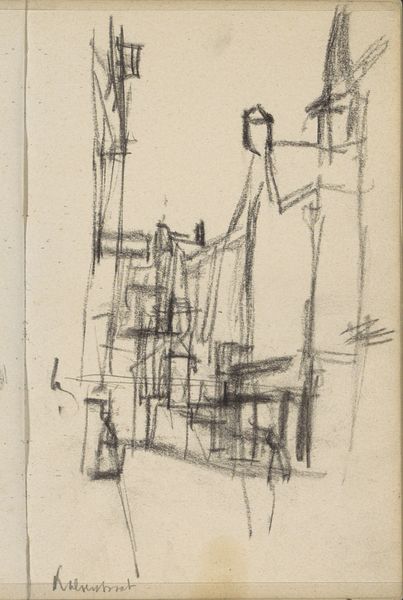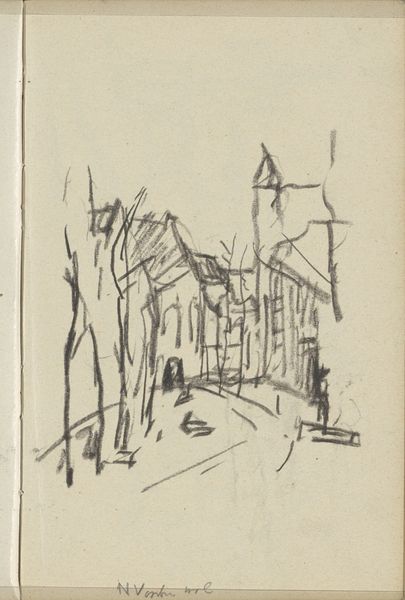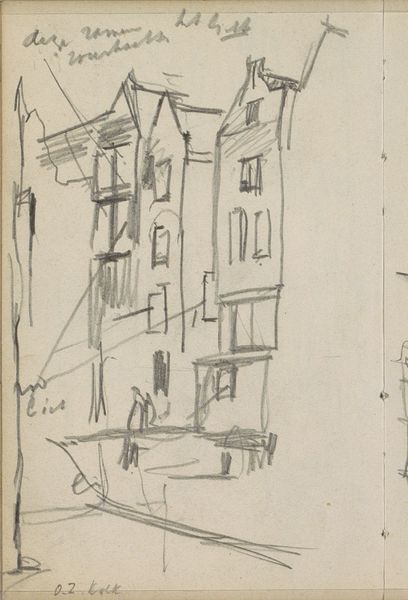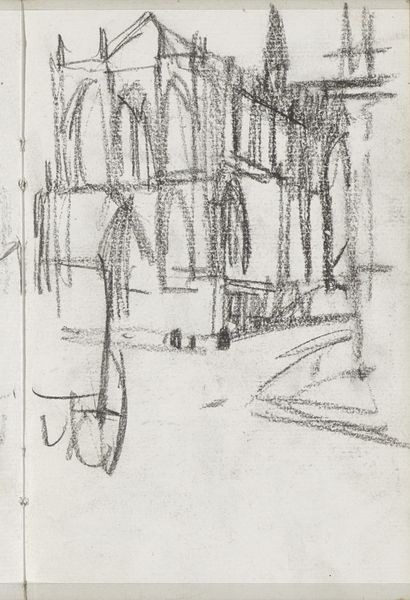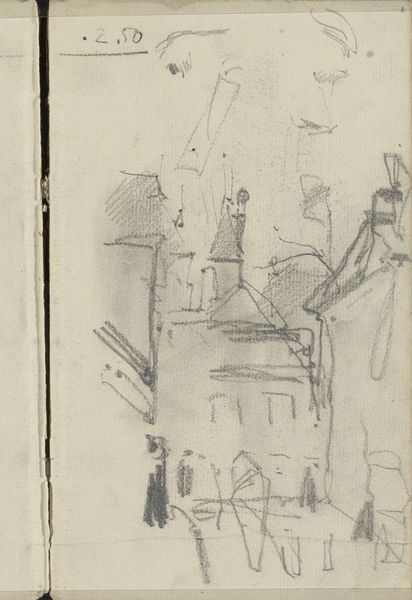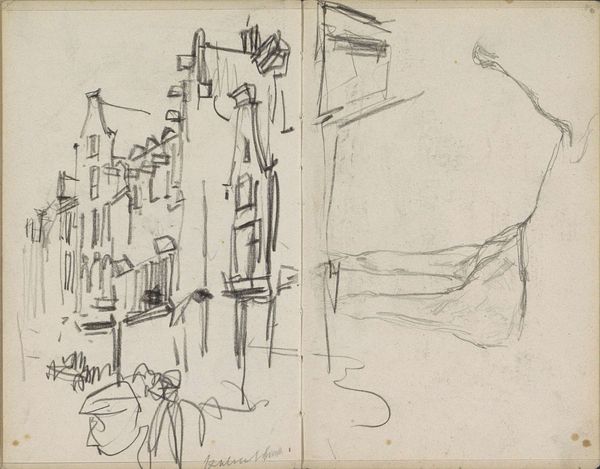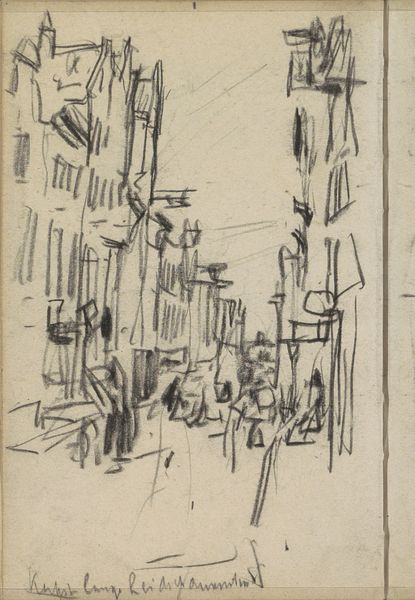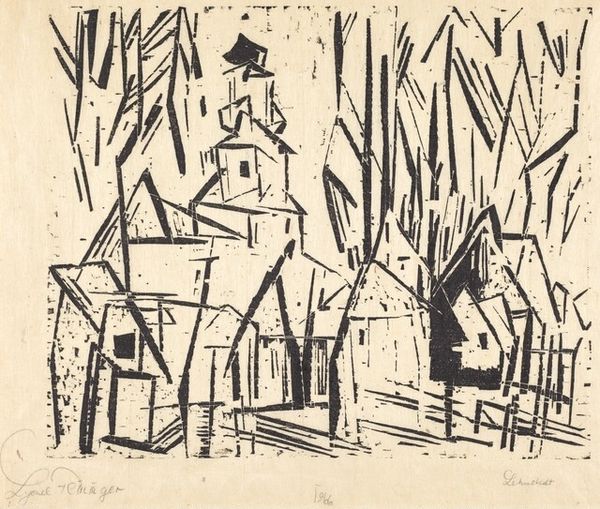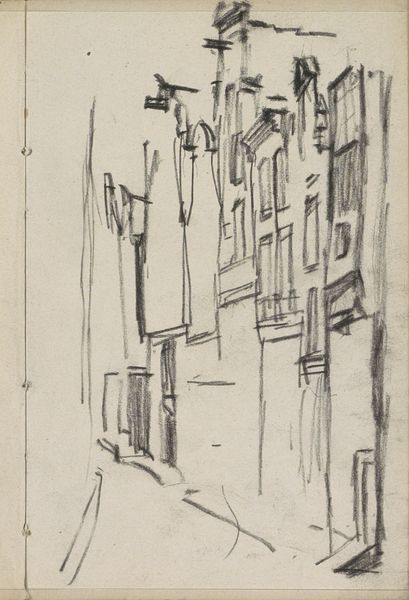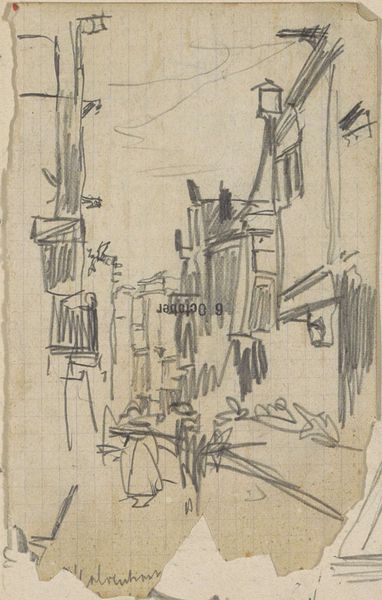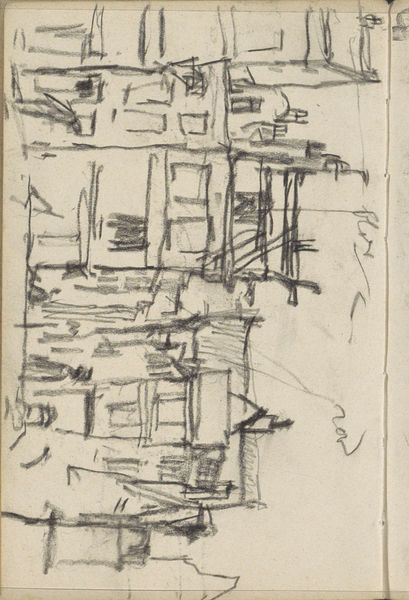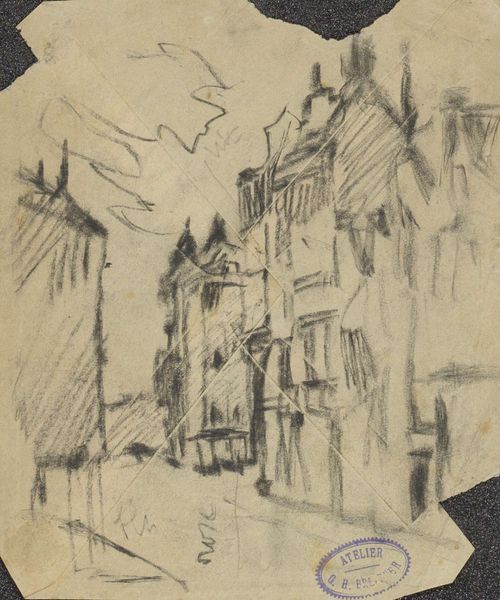
Gezicht op een straat te Amsterdam met de Waag c. 1902 - 1914
0:00
0:00
Copyright: Rijks Museum: Open Domain
Curator: Let’s turn our attention to George Hendrik Breitner’s “Gezicht op een straat te Amsterdam met de Waag,” a pencil drawing created sometime between 1902 and 1914. Editor: It feels unfinished, almost a fleeting impression. The stark lines, the lack of detail... it's quite raw, isn't it? A series of lines creating a sense of architecture but lacking weight, as if about to be blown away at any moment. Curator: That rawness is key. Breitner was fascinated by capturing the immediacy of urban life. Notice how the quick pencil strokes suggest the bustling street scene. The sketch gives form to the Waag, a medieval gate turned public house, yet reduces buildings into quickly executed, basic geometrical forms. Consider how industrialization impacted the working class in Amsterdam during this period. This wasn't about rendering a picturesque view, it was about documenting a modern, rapidly changing urban environment, using inexpensive means. Editor: So, you see this rough style as directly linked to social realities and accessible art production? But isn't there an aesthetic choice at play beyond mere practicality? Look at the composition: the way the buildings angle inward creates a strong sense of depth, drawing the eye to some vanishing point. Breitner uses line weight effectively despite the sparseness of the materials. This feels controlled and artistic to me. Curator: Indeed, though it feels quite hurried! The choice of pencil reflects the shift in artistic values of the period: drawing lost its academic preparatory status. In a way, its lack of color lends it a starker realism, cutting through the Romantic tradition of glorifying urban landscapes. These sketches became important to his painted series of city views. Editor: I can agree on that, and those sharp contrasts amplify the imposing architecture. Perhaps that lack of color really accentuates the weightiness, the shadows created in a sparse format by thin, repetitive black strokes. The artist invites us to wander. Curator: Well, this little drawing helps to shed light on artistic experimentation within urban contexts at the turn of the 20th century, reminding us of art's accessibility through material constraints. Editor: It's also a great exploration of compositional structures and material economy of means, a minimalist aesthetic statement if I ever saw one! It pushes line to create form with confidence.
Comments
No comments
Be the first to comment and join the conversation on the ultimate creative platform.
